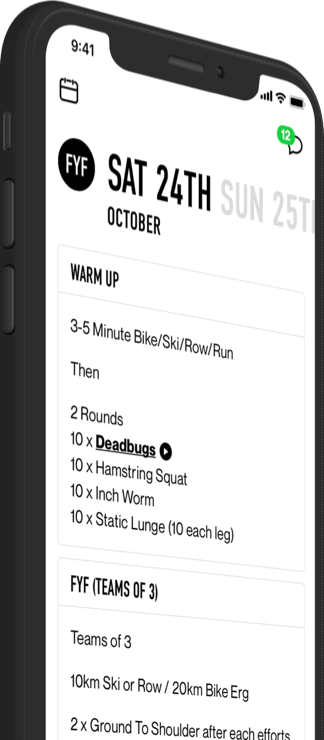Food logs or journals are a great way of checking in with yourself on what you are eating day to day. It is not intended as a way to catch you out, but a way to get a clear idea of where you might start when looking at improving your diet. To start out, choose a minimum of 3 days to log (this will include 2 weekdays and 1 weekend day). If you can track more, 7 days is optimal, as it will give you the clearest picture and accurate representation of your week on a plate. Using a nutrition-tracking app is a great way to track your daily intake and can yield useful data that is easy to analyse.
First thing’s first: it is important to be able to estimate serving sizes so that when you look up foods on your apps, you can accurately estimate the quantity. Again, weighing your food for a short period will yield more accurate information. A few food tracker apps I recommend are:
- Easy Diet Diary
- My Fitness Pal
When setting up an app, it will ask for your height, weight, age and goals. This information may be used to estimate a daily energy intake, as well as a recommended deficit or surplus of energy to meet your physique goals.
I have an app, now what do I do?
This is where you can really start to get an idea of where you may be going wrong, or where you might need to seek extra help in interpreting your own nutrition data.
To start, take an average of the calories you are taking in each day (including averages of carbohydrates, fats, protein and if possible, fibre). This will give you your starting number of calories from which you can adjust upwards or downwards, according to your goals.
Then you can compare your data to these reference numbers, which will guide you to where you might need to make a change.
Disclaimer: Always seek professional help if you are looking at making major changes.
Calories
We all have a minimum energy requirement to survive, referred to as our Basal Metabolic Rate (BMR), which is the amount of energy used after 12 hours of sleep and when fasted first thing in the morning.
Before you even get out of bed your body requires a substantial amount of energy (between 1200-2500 calories plus, depending on age, gender, body composition etc.). Then we add in an activity factor on top to ensure we have enough energy to meet the demands of any exercise we might do.
By tracking your data, you can establish if you are overeating or under eating. As a general rule, you should be consuming between 30 and 40 calories per kilo of body weight to maintain weight, depending on your activity level. On rest days, you might eat closer to the lower end, and for double sessions, you might aim for the upper end.
The effects of undereating when trying to tone up/reduce body fat:
If you are chronically undereating, you are impairing your body’s ability to adapt to the training, as you are not providing adequate building blocks (energy/protein) to recover from training and build lean tissue. In this case, you are unlikely to be able to give 100% in your training sessions, meaning you’ll be unable to push hard enough for your body to feel the need to respond and increase muscle mass or improve the cellular machinery associated with improved fitness. Finally, chronically undereating well below your needs can lead to over-correcting with frequent binge eating, which undoes any energy deficit you might have created.
TIP: Start by taking reducing 300 to 500 calories from your current daily intake and monitor your weight and body composition in response.
How to increase muscle mass and reduce fat mass:
If you are a lean individual trying to put on muscle you will need to increase your daily calorie intake. It takes roughly 2500-3000 calories to build half a kilo of muscle. So, in order to gain lean muscle an increase of between 300-500 calories, in combination with a well-structured training program and adequate protein, will see that there is enough energy to increase lean mass.
If you are trying to lose fast mass while aiming to gain muscle, you do not necessarily need to eat more as your stored excess body fat will provide any extra calories required. Instead, aim for a sustainable energy deficit of about 300 calories, just enough to lose weight but to meet protein requirements.
If you are you are chronically overeating and looking to lose fat, you will need to decrease calorie intake. By taking your habitual intake and reducing the intake by 300-500 calories, you will be able to achieve sustainable eating patterns that allow you to stay on track, and not get so hungry that you fall into the binge/restrict cycle.
Let’s talk about Macronutrients
The term ‘macros’ is shorthand for macronutrients. Macronutrients are carbohydrates, fats and proteins required for energy. Micronutrients are vitamins and minerals we need in smaller amounts each day to maximise good health. The first step to using macros to manage your diet is knowing how many grams of each you need each day – depending on your energy needs.
Each macronutrient has a different calorie/kilojoules content per gram. For reference, 1 calorie equals 4.2 kilojoules. Per gram:
– Carbohydrates: 16 kJ or 4 cal
– Fats: 38 kJ or 9 cal
– Protein: 16 kJ or 4 cal
How much of each do you need?
While there’s no clear-cut formula, we do understand how calories between proteins, carbohydrates and fats should be consumed for optimal performance.
Protein
Adequate protein intake is important to maximise muscular adaptation and maintaining and protein balance. For active people, aim for 1.5-2.5g according to calorie budget, training age and body composition goals. Start low and build up.
Carbohydrate
Carbohydrates, specifically after training, improve net muscle protein balance after resistance exercise and help to fuel your best effort. The rule of thumb, especially at the starting point, is to aim for 3-5g per kilo of body weight. Stick to the upper end on active days, and lower-end on less active or rest days.
Fats
Fat intake is not only important to cell function and vitamin absorption, but also hormonal health. Reducing fat intake too low can impact on testosterone levels in both males and females. Fat should represent approximately 25-30% of daily calorie, noting that they have almost double the energy density of protein and carbs. A very top level rule of thumb is to aim for 1-1.5g per kilo body weight.








